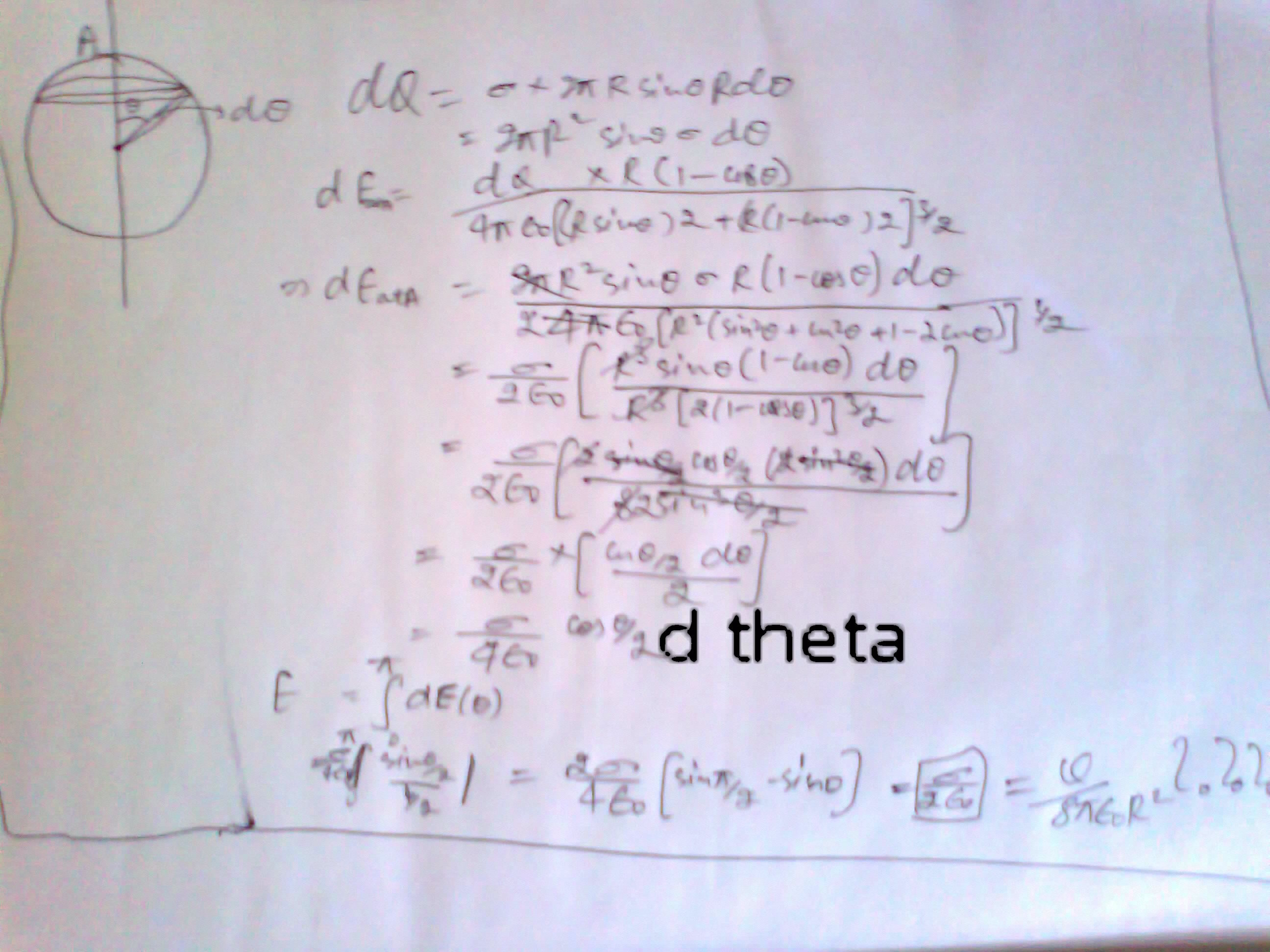electric field at surface of a conducting sphere...

recently, i tried to find electric field at surface of a charged dielectric and a conducting sphere without using guass law, rather using standard method of integration.... for dielectric sphere i got it right but for conducting one, dividing into thin rings and analysing the fields due to them i got the field less by a factor of 2 . please try to find field like this, and if you get correct, tell where i was missing. see the attachment... i forgot dtheta so i had to edit.... thanks in advance.....
No vote yet
7 votes
Easy Math Editor
This discussion board is a place to discuss our Daily Challenges and the math and science related to those challenges. Explanations are more than just a solution — they should explain the steps and thinking strategies that you used to obtain the solution. Comments should further the discussion of math and science.
When posting on Brilliant:
*italics*or_italics_**bold**or__bold__paragraph 1
paragraph 2
[example link](https://brilliant.org)> This is a quote# I indented these lines # 4 spaces, and now they show # up as a code block. print "hello world"\(...\)or\[...\]to ensure proper formatting.2 \times 32^{34}a_{i-1}\frac{2}{3}\sqrt{2}\sum_{i=1}^3\sin \theta\boxed{123}Comments
it's not understandable frnd
Log in to reply
Well, I didn't know latex 10 months ago :P
Just ignore it. I found what was wrong.
Log in to reply
Could you tell whats wrong??
Log in to reply
Actually, I didn't add the electric field due to small charge just on the given point, adding which(2ϵ0σ), we get correct answer.
Log in to reply
Oh yes... Thanks.. :-)